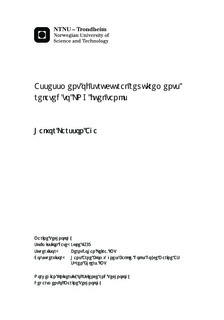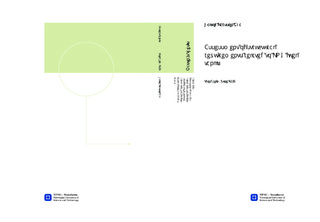| dc.contributor.advisor | Leira, Bernt Johan | nb_NO |
| dc.contributor.advisor | Blomvågnes-Bakke, Hans Arne | nb_NO |
| dc.contributor.advisor | Ehlers, Sören | nb_NO |
| dc.contributor.author | Aga, Halvor Larsson | nb_NO |
| dc.date.accessioned | 2014-12-19T12:09:57Z | |
| dc.date.available | 2014-12-19T12:09:57Z | |
| dc.date.created | 2013-09-19 | nb_NO |
| dc.date.issued | 2013 | nb_NO |
| dc.identifier | 649586 | nb_NO |
| dc.identifier | ntnudaim:8782 | nb_NO |
| dc.identifier.uri | http://hdl.handle.net/11250/238602 | |
| dc.description.abstract | This thesis considers collision between ships, and the structural resistance of the struckship with the aim to minimize the indentation into the ship side.First it gives a background in ship collision analysis, different techniques are discussed,and emphasis is given to the decoupling of the ship collision problem. Secondly itassesses the rules that come into account when introducing LNG fuel tanks in a cargoship, rules regarding modelling of ship structures as well as expected rule development.An introduction to the existing methods for estimation of energy involved in shipcollisions is given. The different structural components of a ship section are discussed,and applicable analytical formulae as well as an analytical method for determining theforce indentation curves for a full ship section are reviewed. Special structural elementsof core type are briefly discussed.A parametrical model of a ship side section capable of modelling different configurationsfor the structural layout is developed. This model is used for collision analysis by meansof LS-DYNA, where displacement controlled impact with a rigid and simple cone shapeindenter is driven into the side section at a right angle. The simulations are uncoupled.They are verified by means of convergence and sensitivity testing. Variables whichshould be given close attention enclose failure strain of the material and the staticfriction coefficient. The model is compared to analytical solutions, showing agreement toa certain degree. For comparative studies the model is given confidence.The model is used for a comparative study where the aim is to assess the reduction insafe distance for a gas tank, by taking into account the effect of ice strengthening. In thiscase study it is concluded that the fuel tanks could be moved 1.37 metres or 1.45 metrescloser to the ship side for two different implementations of ice class. Structuralparameters are studied. The main conclusions are that an increase of the outer skinthickness or the introduction of an extra stringer gives good results. For concurrentincrease the thicknesses in webframes, stringers and outer skin give good results. Acomparison table is developed, and a comparison ratio is presented for eachparametrical variation. It is noted that the ice strengthened design gives promisingcomparison ratios. This study has been carried out by variation over the whole height ofthe section and ?individualization? of the variables over the height might lead toimproved results. | nb_NO |
| dc.language | eng | nb_NO |
| dc.publisher | Institutt for marin teknikk | nb_NO |
| dc.title | Assessment of structural requirements related to LNG fuel tanks | nb_NO |
| dc.type | Master thesis | nb_NO |
| dc.source.pagenumber | 142 | nb_NO |
| dc.contributor.department | Norges teknisk-naturvitenskapelige universitet, Fakultet for ingeniørvitenskap og teknologi, Institutt for marin teknikk | nb_NO |

